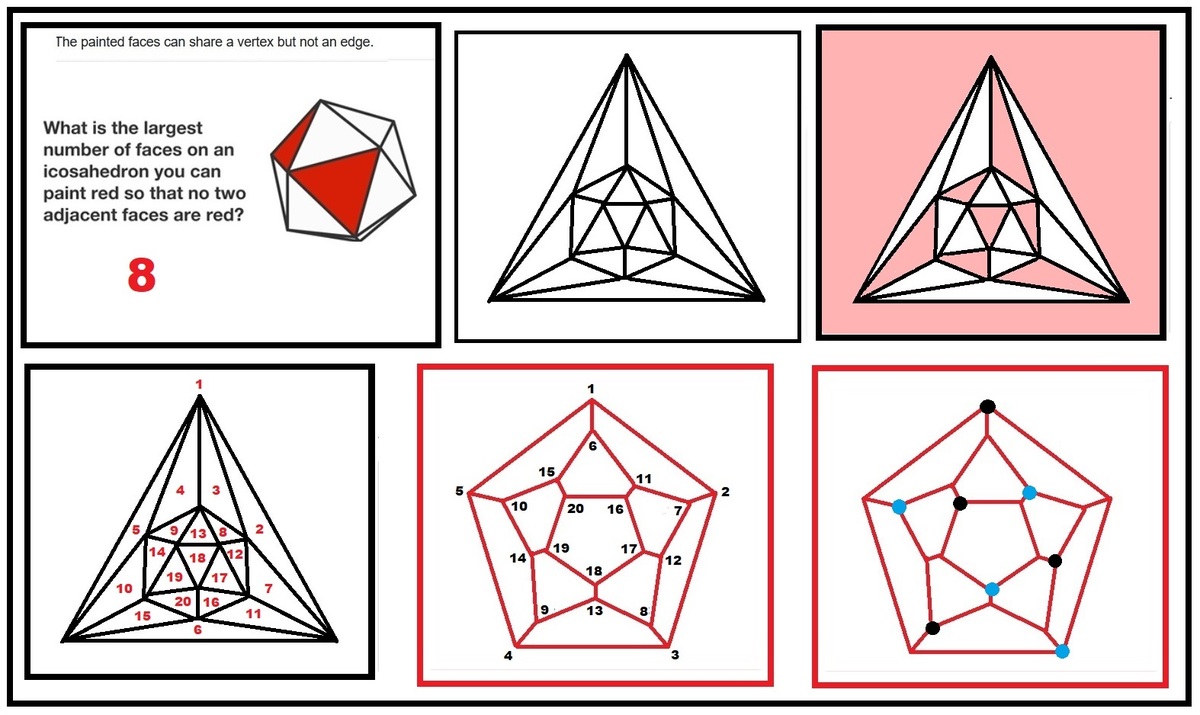Paint it red
The picture shows an icosahedron, a 20-faced Platonic solid.
What is the largest number of faces you can paint red such that no two adjacent faces are red?
Clarification:
Painted faces can meet at a vertex but not along an edge.
The answer is 8.
This section requires Javascript.
You are seeing this because something didn't load right. We suggest you, (a) try
refreshing the page, (b) enabling javascript if it is disabled on your browser and,
finally, (c)
loading the
non-javascript version of this page
. We're sorry about the hassle.

Each vertex in a icosahedron is surrounded by 5 triangular faces, and with the given restrictions at most 2 of those 5 faces can be painted red, as shown below.
Since there are 1 2 vertices in the icosahedron, with at most 2 painted triangular faces around each vertex, and each triangle has 3 vertices, the most possible painted faces in an icosahedron with the given restrictions would be 3 1 2 ⋅ 2 = 8 , and one possible way to do this is shown below.